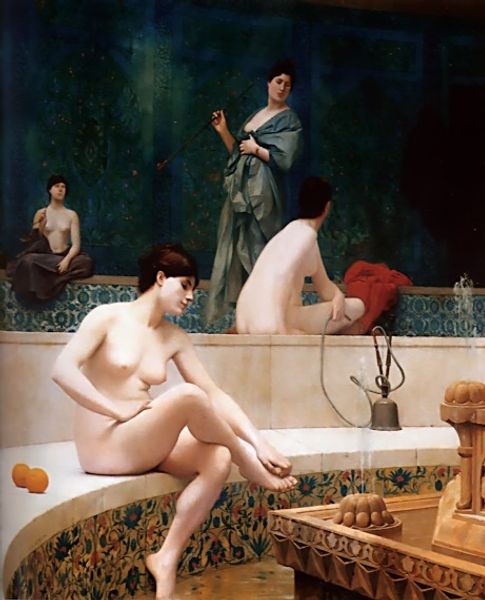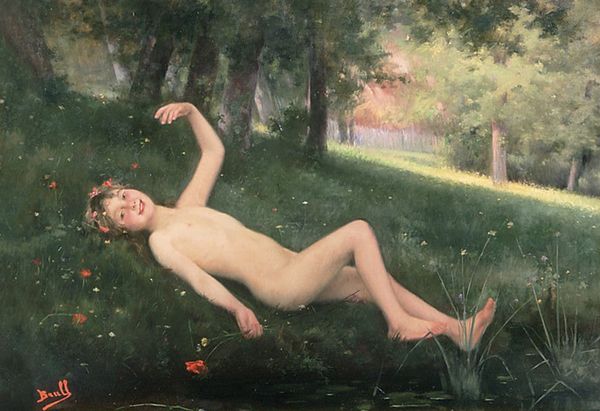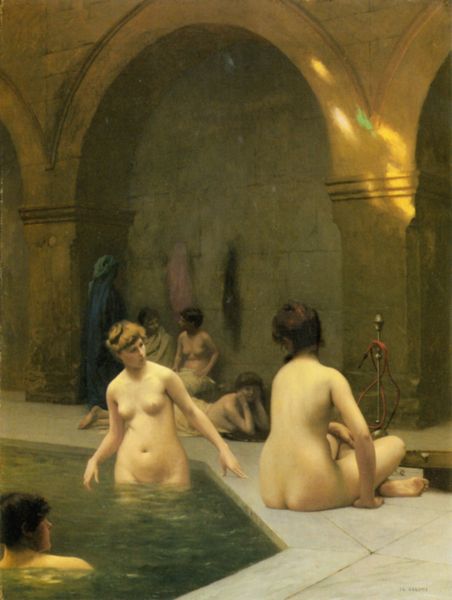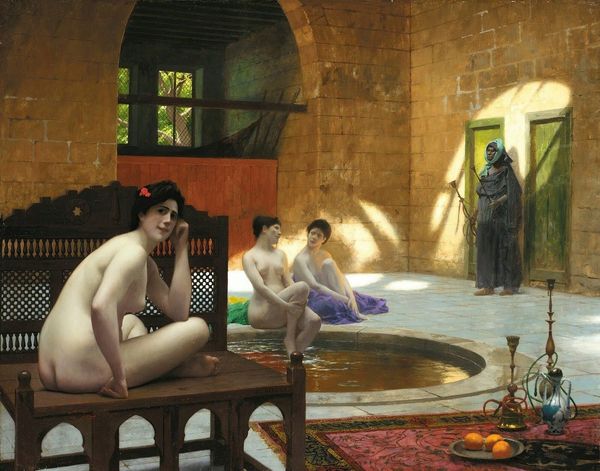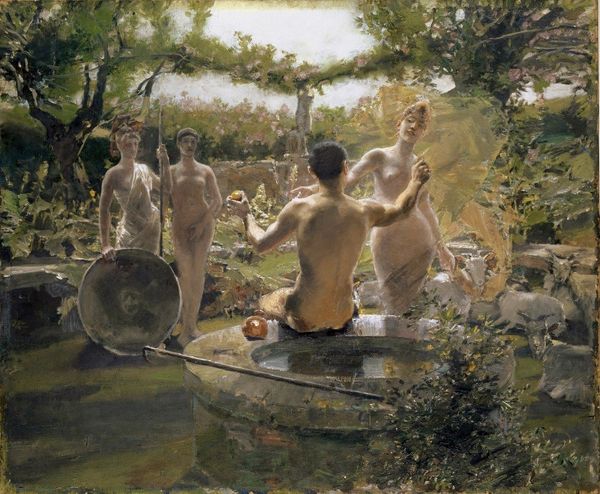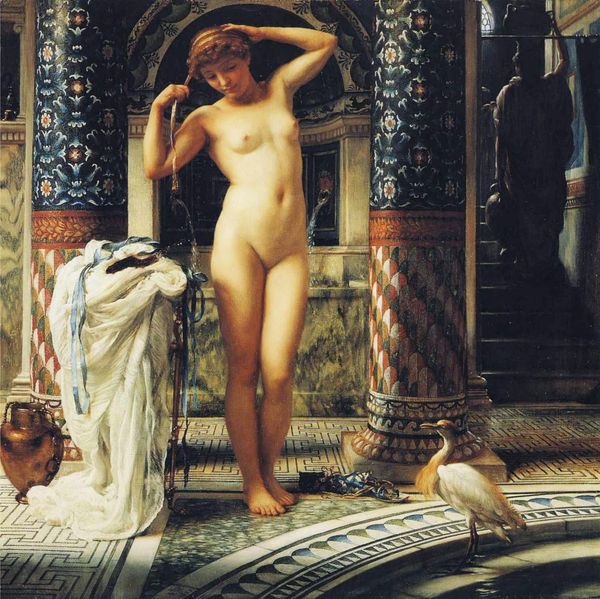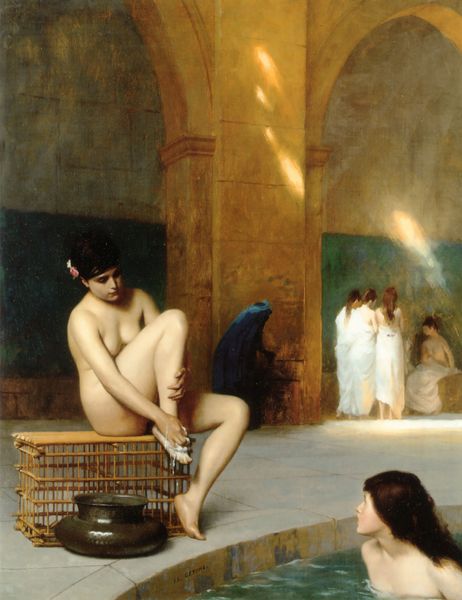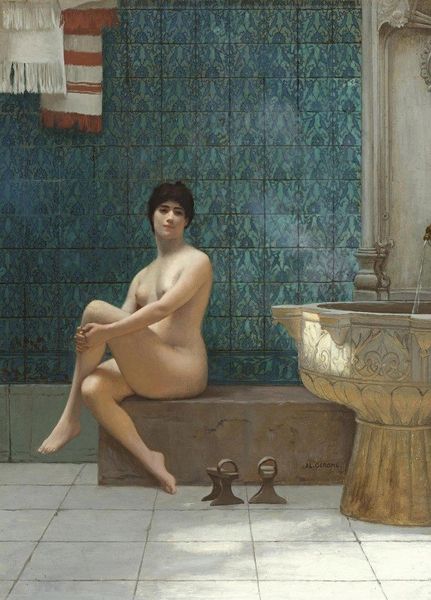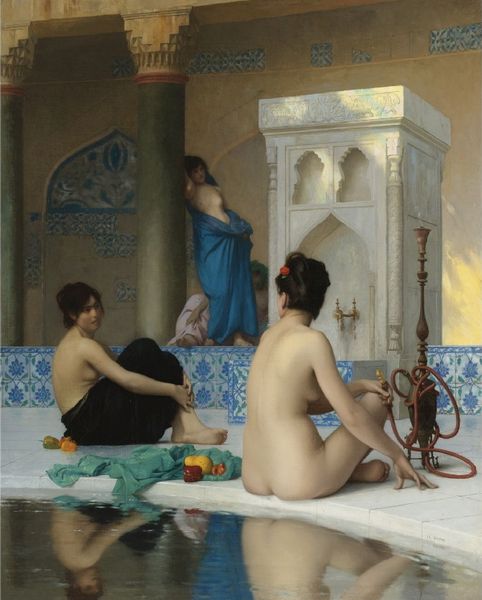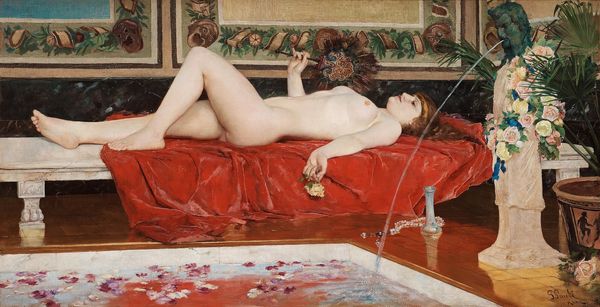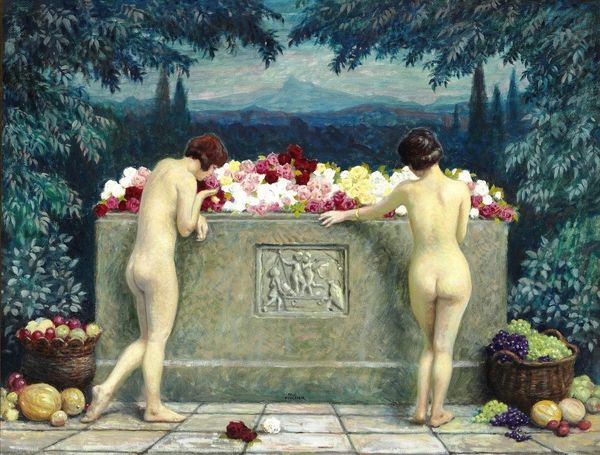
#
acrylic
#
abstract painting
#
possibly oil pastel
#
oil painting
#
female-nude
#
neo expressionist
#
acrylic on canvas
#
underpainting
#
painterly
#
water
#
human
#
painting painterly
#
expressionist
Copyright: Public domain
Editor: So, this is "The Hookah Lighter" by Jean-Léon Gérôme, painted in 1898. It seems to be an oil on canvas depicting women in what appears to be a bathhouse. I’m struck by the contrast between the detailed foreground and the somewhat hazier background figures. What visual elements stand out to you? Curator: Note the meticulous rendering of the tilework and the hookah apparatus in the foreground; its presence underscores the two-dimensionality of the image field. How might the interplay of light across varied textures and forms contribute to an understanding of its artistic structure? Editor: I see that the rug seems like a transition between the hard, geometric tile and the bodies. What does that visual juxtaposition tell us? Curator: Precisely. The rug functions as a liminal space, modulating the transition from structured geometry to the organic forms of the figures. How does this placement invite us to negotiate a visual order—a sense of harmony or discordance? Consider the spatial organization and the flattening effect on the picture plane. Editor: It seems like it is all deliberately placed. Nothing is accidental. I am starting to understand the intent, it seems as though we are in this liminal space looking from hard edges into organic space. Curator: Exactly. Every element, from the distribution of light to the placement of figures, is orchestrated to construct a coherent, yet intricate, visual language. It showcases the principles and elements as the language of art. What could we extract? Editor: I see it now; it is like looking at an intricate arrangement of shapes, forms, and textures first, then appreciating the scene second. It highlights how important composition is.
Comments
No comments
Be the first to comment and join the conversation on the ultimate creative platform.
